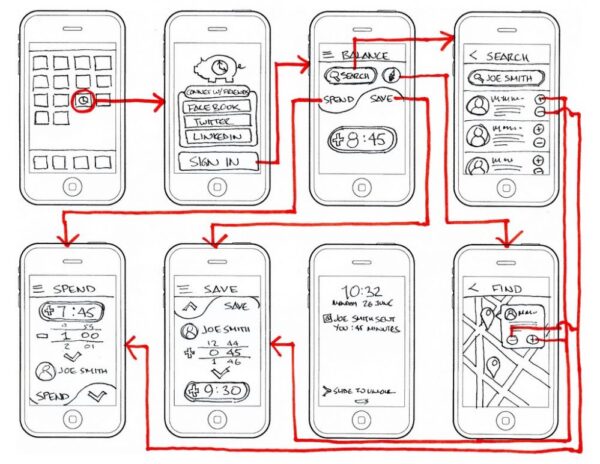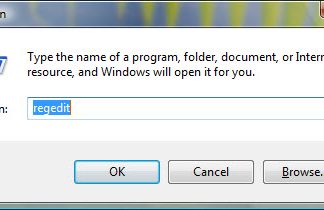Mobile app development can be a lucrative career opportunity. But building apps is also very complex. To understand how it works, you will need to understand the building process from start to finish.
Luckily for you, we’re here to give you our 6 tips that will do exactly that. So with all that said, let’s start.
1. Research

App development always starts with research. Regardless if you have a cool app idea or if you’re the person building it for someone else, you need to research the topic.
Research is important because it allows you to establish core mechanics. From target audiences to features and design, the app-building process always starts with research.
2. Establishing Goals
You’ll notice that building apps isn’t only about understanding code and how it works. In today’s time, it’s about thinking first and acting second. You’ll be spending quite some time on things such as researching, establishing goals and objectives, and even wireframing before you even write a single line of code.
And establishing goals is the second part of the mobile app building process. In this part, you determine the most important objectives and how to reach them. In this part, you also identify key problems and how to solve them. One more thing that you do in this part is establish what sort of features your app will include.
Once you’ve got all that out of the way, you need to focus on reaching your target goals as that’s the only way to move forward in the development process.
3. Wireframing

Wireframing is the last step before you start writing code. And this one is highly important because it gives you a pretty good idea of how the app will look like and what features will it include.
Wireframing has sort of become a standard and must-include part in every development process. From building apps to designing websites, every project should include this part.
Wireframing can determine how your app looks like, how it functions, what features it holds, and how users will interact with it. You can design every single thing through wireframing. Once you’re done with wireframing, the next step is to establish the backend.
4. Backend
The backend might come under part four, but in professional app development is comes under “Phase 2”.
Phase 2 is the technical part. Since we’re done with brainstorming ideas, researching the market, and wireframing, among others, the next step of the app building process is to focus on the backend structure.
The backend is the foundation of the app. It is made out of hard code and the length of the development depends on the app itself. If you’re making a more complex app, then it’s natural for the development to take longer.
Certain apps don’t even require a backend structure, but that’s rarely the case. Almost every app requires backend programming as it is key for establishing APIs, servers, data integration, and more. Have you ever received a notification from Facebook, Twitter, or any other app? Well, that is only possible through backend.
A lot of development agencies focus heavily on backend structure. Since this is the foundation of the app and everything technical, it’s important to have the right people working on it. If that’s something you’re looking for, then make sure to visit digitalauthority.me.
5. Development

Once you’ve established the backend, it’s time to start developing the app. While you’ve already started developing the app, this part involves setting up storage solutions, databases, servers, and even accounts to distribute the app itself.
The development process is made out of many more steps. From frontend structure to UX/UI, there is a lot of work in this one.
Essentially, the development process is about incorporating the wireframe idea. Attention to detail is of utmost importance in this part as it can be vital for the success of the app in the future.
6. Testing
After development is finished, it’s now time to do some app testing. If you’re making more complex applications, then you’ll need to hire a professional QA tester. QA stands for Quality Assurance and it makes sure that you deliver the best product or service. In your case, it makes sure you deliver the best possible version of your application.
The testing part is an important one in the app development lifecycle as it puts the application against real-world scenarios to uncover technical issues or errors.
This part involves rigorous testing of every single feature and button that your application has. Professional QA testers will in some cases try to break down the app to uncover potential backend issues.
But don’t think of it as a bad thing. Uncovering issues before launch will save you from a lot of negative reviews. It is the job of the QA tester to save your application from those negative reviews.
What To Focus On

Lastly, let’s talk about some of the things that modern apps should have. While you don’t have to tick all the boxes, it’s important that you incorporate modern UX principles to deliver excellent products.
· Speed
Modern apps should be fast – a lot faster than websites. And that’s not a hard thing to do as applications are far smaller in size compared to modern websites.
· Simplified Design
No one enjoys looking at outdated designs. Being an app developer also means keeping up with modern UX/UI principles. Every application should be simple and nice to look at.
· Interaction
While this solely depends on the type of application, most modern apps should be engaging.
· Push Notifications
Again, not every app needs to have this feature, but most that return some sort of information do. You need to take a look at your application and determine whether or not it needs push notifications.
Finishing Thoughts

The app-building process is a long one. It is estimated that mobile applications need anything between two months and six months to make. Understanding the building process can help you familiarize yourself with how mobile apps are actually made.



















